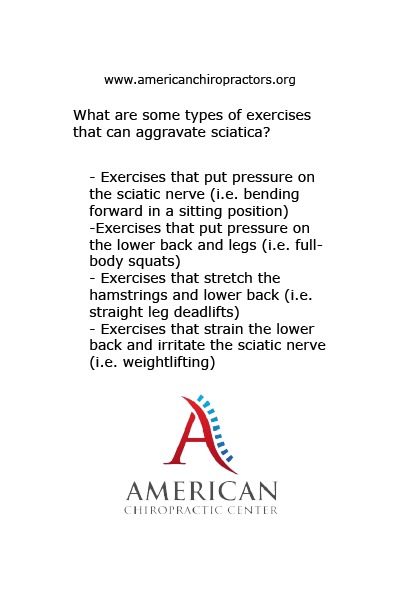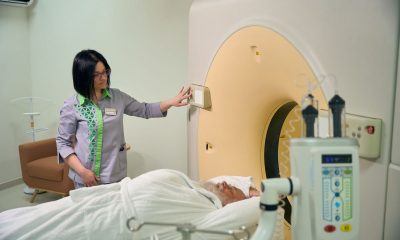Sciatica
Is It Okay to Workout With Sciatica Pain?
Sciatica pain is caused by the compression or irritation of the sciatic nerve, which runs from the lower back down the legs. Symptoms can include pain, numbness, and weakness in the legs. For many people, these symptoms make it difficult to even walk, let alone workout. However, there are some cases where working out with sciatica pain may actually be helpful.
Read More About Is It Okay to Workout With Sciatica Pain

More Things To Know About Is It Okay to Workout With Sciatica Pain
Exercise can help to loosen tight muscles and improve circulation, both of which can help to reduce pain. In addition, building strength and flexibility can help to prevent future episodes of sciatica pain. Of course, every case is different, and it’s important to consult with a doctor before beginning any new exercise program. But for some people, working out may be an effective way to manage sciatica pain.
What Exercises Should I Not Do With Sciatica?

If you suffer from sciatica, you should avoid doing certain types of exercises. For instance, you should avoid bending forward in a sitting position, as this can put pressure on the sciatic nerve. It is also important not to lift objects with your back, but instead squat down. This will reduce the pressure on the sciatic nerve and prevent it from getting pinched.
Full-body squats put pressure on the lower back and legs, and they can aggravate sciatica. Straight leg deadlifts are also bad for people with sciatica, as they stretch the hamstrings and lower back. They can also damage the sciatic nerve. Some people should avoid weightlifting altogether, as this can strain the lower back and irritate the sciatic nerve.
What Are The Signs Of Sciatica Getting Better?
Your physician will order a physical exam and imaging tests to determine the cause of your sciatic pain. MRIs can reveal problems with disks or vertebrae. Spinal X-rays can identify fractures and other problems. CT scans and magnetic resonance imaging (MRI) can detect bone spurs and soft tissues. They can also show pressure on the sciatic nerve or disc herniation. MRIs are most often ordered to confirm the diagnosis of sciatica. Your physician may also order a myelogram to determine which discs or vertebrae are causing your sciatica.
Exercise and good posture while sitting can help relieve sciatica pain and prevent it from returning. You can also try applying ice packs or hot packs several times per day to the painful area. If these do not relieve the pain, your physician may prescribe an anti-inflammatory drug or spinal steroid injections. Your doctor may also prescribe physiotherapy to correct the underlying problem. In severe cases, a surgical procedure may be needed to remove part of the spinal disk and relieve pain.
How Long Does It Take Sciatica To Heal?
While it can be difficult to fully recover from sciatica, self-care measures can help speed up the recovery process. For instance, you can increase your daily activity to reduce pain and swelling. You can also use hot or cold packs to help relieve pain. However, you should avoid applying hot packs for a prolonged period of time.
In some cases, surgery is the best option. This surgical procedure involves the removal of a section of the sciatic nerve in the lower back. It can take several weeks to heal completely, depending on the severity of the sciatic nerve pain. It can be risky to undergo surgery and may not be suited for all sufferers.
Does Drinking Water Help Sciatica?
Drinking plenty of water for sciatica pain is important because it can reduce the severity of your symptoms and slow the progression of your sciatica. Water can rehydrate the discs that support the sciatic nerve. If these discs are dehydrated, the pressure on the sciatic nerve increases.
During your daily activities, your intervertebral discs lose fluids. They thin and become weak. When your discs lose water, they shrink. It takes about a half-inch of water to keep your spine the same length as when it was full. Drinking more water can help prevent this shrinkage and keep your spine healthy and flexible.
Discs are small bones that cushion the spaces between vertebrae. They have a marshmallow-like consistency and contain a layer of fluid in the middle. When we are dehydrated, the discs become smaller and may become less supportive of the spine. This can lead to painful conditions such as herniated discs.

Doctor Osvaldo Pepa, Neurosurgery Service Physician at Hospital San Martin, La Plata, Argentina. I graduated last November 16, 1984 with a Medical Degree at the Universidad Nacional de La Plata. The Medical Board of La Plata, District 1, licensed me as a Neurosurgeon in 1990. I hold a Provincial and National License and an active member of the Neurosurgery Society of La Plata, World Ozone Therapy Federation, and Inter American Society of Minimally Invasive Surgery.

























